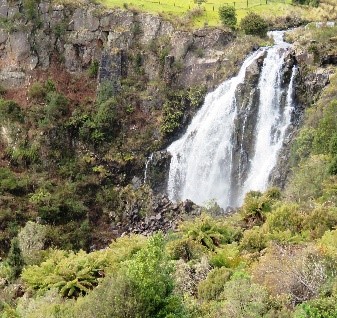
It encompasses the views of proud and concerned Waratah residents who have witnessed the decline of the extraordinary history of the town/area with little or no support from succeeding councils and governments of all persuasions.
This lack of support has been manifestly evident in the absence of positive action by Waratah-Wynyard Council, but more particularly by the actions of TasWater to effectively destroy the Waratah Reservoir, and thereby thwart the unique heritage associated with the development of the Bischoff Mine, the associated powerhouse and other facilities, and then the potentially corrupt and deliberately malignant interference in Heritage Council considerations.
A resultant positive outcome will place Waratah in an eminent position as a west coast tourist destination and symbiotic with and supported by Western Wilds branding.
Background
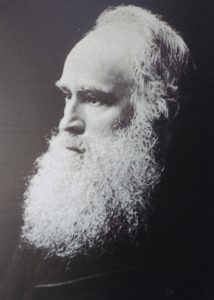
James ‘Philosopher’ Smith.
The history of Waratah holds a preeminent position in Tasmania. In 1871 James ‘Philosopher’ Smith discovered tin at the Mt Bischoff site and the mine established in 1881.
This discovery heralded the opening of Western Tasmania as a mineral province and the operations at Queenstown, Zeehan, Rosebery, Hellyer, and the rest of the west coast followed. An economic dawning for a state built on convicts, farming, and the extermination of the indigenous inhabitants. It effectively prevented the annexure of Tasmania to Victoria which had been mooted due the dire financial situation the state was in post the convict era.
During the time of its operation the Bischoff tin mine produced some 62,000 tons, enabled the formation of the town and employed 2000 personnel, and was the richest tin mine in the world. The initial Bischoff mining operations were powered by numerous water wheels to drive the ore crushing stamper mills.
In 1883 the mine became the first industrial plant in Australia to be lit by electric light and two years later provided illumination to the mine offices, mine manager’s house, the St James Church and the first street lighting in Australia. In 1907 the Bischoff Powerhouse (the second Hydro station in Tasmania after Duck Reach in Launceston) was constructed on the Waratah River below the Ringtail Falls and operated until the 1950’s. This was a remarkable development and inexorably connected to the simultaneously-constructed Waratah Reservoir. Without the Reservoir there would have been no Powerhouse.
When Cradle Mountain Water handed over their responsibility to TasWater in 2013 it noted there were many structural concerns in the Waratah region and it was recommended that a number of risk mitigation measures needed to be undertaken and that further research was required. None of these was addressed and TasWater reduced the level of the Reservoir (Not the Dam that Cradle Mountain had transferred) without notice, and in lowering the spillway level of the Reservoir (Crown Land, Public Reserve) violated state and federal laws.
The Reservoir was originally listed as Public Reserve and by extrapolation owned by the community. A search in January 2018 revealed the area had been relisted and was no longer considered Public Reserve. As a result of the activity described above, the enraged Waratah community established a Save the Dam Group. In December 2018 the Group submitted a substantial 132-page submission to the Tasmanian Heritage Council.
On the 17 April 2019 the Heritage Council rejected the application, with their Minutes stating:-
“APPROVE the rejection of the application to enter Waratah Dam Reservoir in the Tasmanian Heritage Register pursuant to section 17(1) of the Historic Cultural Heritage Act 1995 on the basis that the place does not meet any criteria for entry”.
How could that resolution possibly be agreed to by the Heritage Council? The Reservoir (not owned by TasWater) has the ultimate heritage as described above. For the complete story about the Dam and TasWater please read CEO of GBE has PhD in OH&S.
Current Status
The Waratah township has been a ghost town since the advent of the COVID19 with the all services either closed or at much reduced capacity. This includes the Bischoff Hotel, the Mushroom Café, the Roadhouse, the Museum, and the Atheneum Theatre. The visitation of campervans and tourists has been non-existent, all local tourist businesses have been unable to operate, and the morale of citizens is below zero.
And what are the state government, Council and TasWater doing? The EOI placed by TasWater has achieved nothing although rumour has it a well known civil engineering company is soon to embark upon some rehabilitation of the reservoir ramp and spillway. And the Council has been unable to assist except for the normal maintenance issues – refuse removal etc.
But what else could be achieved in this time of despair? And how much would it cost and in what timeframe?
This submission endeavours to describe an option(s) to rejuvenate the community building on the unique history and extant physical facilities.
Option(s) of Renewal
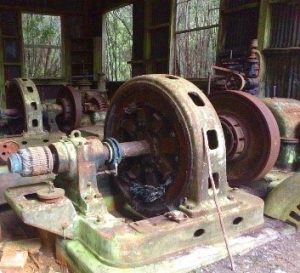
So … let us build the future, the Regenerated Waratah, on those very important and substantive foundations.
For example (see diagram below):
- Create a string of water features linking from the Fossey River via the Bischoff Reservoir, the Waratah Reservoir, the water race , the Waratah town dam, to feed into the Waratah Falls and the Waratah River flowing to Ringtail Falls, the Old Powerhouse and circuiting the remnants of the Mt Bischoff Mine site.
- This will require physical creation/renewal of dam sites, water races, sluice valves and other elements to ensure ongoing and sustainable water flows during drier months/seasons.
- Install a Penstock Dam at the base of the Waratah Falls to allow controlled flow to the north and east towards an historic generator(s) aka the original power sourcing.
- Place an historic generator, fed from the Penstock, close to the base of the Waratah Falls and visible from the current viewing points, with relevant tourist information boards re the significance of such.
- Build a water pipeline and parallel walking track from the Penstock {and if needed a header dam) to a further historic generator located at the Old Powerhouse.
- Refurbish the Old Powerhouse e.g. roofing, walling, remove rubbish etc to a point where it meets all Council etc safety requirements and install relevant tourist information boards.
- Improve the current walking tracks to the Powerhouse from William Street and Mount Street to meet all relevant safety requirements of the Council/ Sustainable Timbers etc and conjointly upgrade the Ringtail Falls Bridge to similar standards.
- Contemplate a similar pipeline from the Penstock Dam to the Tailings Dam at the back of the Mount Bischoff mine site where I understand an historic generator is still in existence with parallel walking track and tourist information boards.
- Review whether this walking track might be able to be linked to the current linkage by foot to Mt Magnet and the Pebbles Pathway.
- Ensure TasWater repair the damage to their unowned property (the Waratah Reservoir) at their cost.
In summary, a substantial degree of activity and civil engineering with a monumental tourism outcome rivalling Port Arthur and with a focus on the west coast.
Engineering/Business Plan/Timeframe/Cost and Way Forward
A major civil engineering company needs to urgently complete a business plan with full costings of all options and a timeframe for scrutiny and actions as outlined below
Once the full cost and business plan is achieved it would be essential to accomplish the following:
- Ensure the Waratah community agree in principle that this proposal should be pursued;
- Consult/negotiate with Sustainable Timbers Tasmania, Bluestone Metals X, and the WarWyn Council re maintenance/improvement activities over their designated land and concomitant liability issues;
- Engage with the local Aboriginal community to obtain advice and consensus regarding heritage values on designated land and potential access to the Pebble Pathway;
- Obtain WarWyn Council support for the business plan/costings at their next Council meeting;
- The business plan and associated funding needs be submitted to both the state and federal government Ministers for Treasury, Tourism, and Infrastructure for consideration pursuant to COVID-19 economic boosting initiatives;
- Ensure that Tourism Tasmania and all other relevant tourism authorities are fully advised and supportive;
- Initiate an extensive media campaign to enable all relevant markets are informed, this should include social media;
- Develop a logo/message/promotional flyer – see an example below.
Optimal Outcome
The ultimate objective of this submission is to ensure that for time immemorial Waratah is considered as having the following characteristics, viz:
- A town/region that has the most important history in the making of the state both economically and constitutionally – a Philospher’s Dream!
- An image of a first class tourism area that is readily accessible to all and has descriptors (information boards) that fully detail the area, the activities, the history etc.
- The initial region on the west coast for all tourists to visit, explore, learn, and love. The entry point to those other ‘must visit’ zones of Corinna, Strahan, Queenstown, Rosebery, Zeehan and Tullah.
- A major feature of the Western Wilds website (where Waratah history and contribution to the state is currently not mentioned) and becomes the ‘first port of call’ to the Wild West.
- An entity that is paramount in all the advertising by Tourism Tasmania in various media and a brochure available at airports, the Spirit of Tasmania ferry, and tourist offices in the state.
- And for those brochures/advertisements to be throughout Australia and internationally.

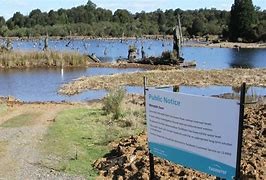
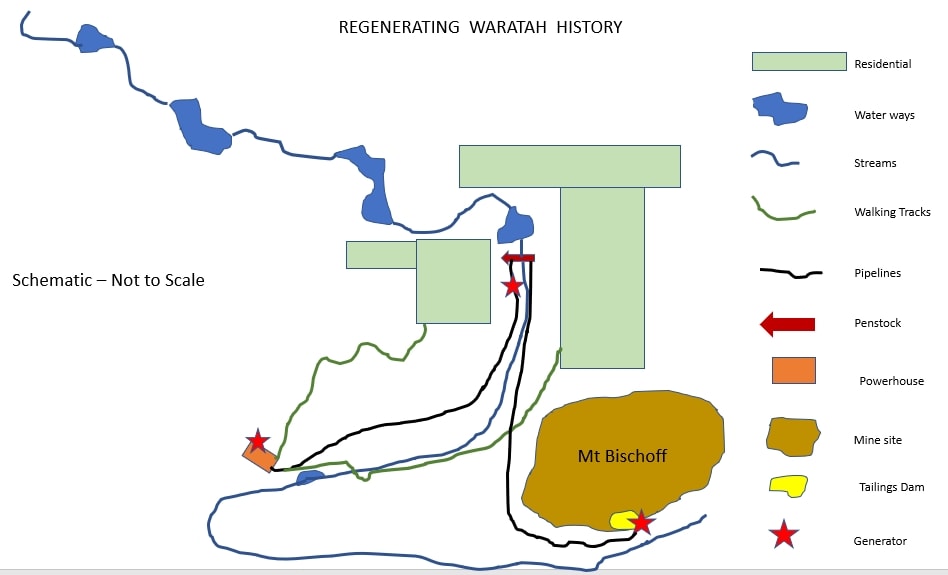


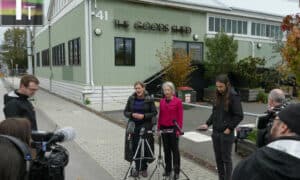





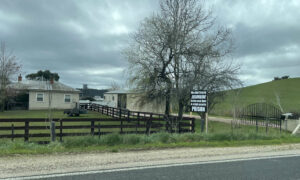





















Simon Warriner
July 8, 2020 at 19:41
That’s an interesting concept, John.
I’ve had a couple of discussions over the years with fellow motor re-winders who regard old machinery as having considerable heritage value that is unrecognised by the gatekeepers.
Another site that fits this bill is Lake Margaret Power Station, but its status as a working generating facility limits the tourism angle, due to OH&S issues I suspect.